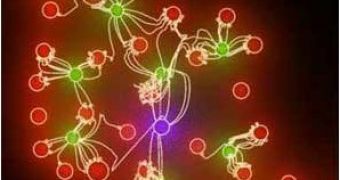Neural networks are artificial computational models, made up of densely interconnected adaptive processing units, known as a parallel distributed processing network, essentially a computing paradigm that is loosely modeled after cortical structures of the brain.
Compared to a PC, that has only one powerful processor, even though it may be simulating two or four processors (dual-core, quad-core), these networks contain many simpler processors working in parallel in a complex relationship.
These interconnected processors are called neurons or nodes and work together to give the output function.
One of the biggest advantages of the neural networks is the fact that they would be able to adapt, much like the human brain, which means that "learning by example" could replace "programming" in solving problems.
The ability to adapt will mean that the system's parameters will automatically adjust so that the system can generate the correct output for a given input, much like changes in the synaptic efficacies of neurons change to adapt to new information.
Such a learning neural network will be able to convert printed text to speech. For example, the input will be a string of three consecutive letters from a given word in a number of articles picked up from, say, a newspaper to generate a large number of pairs. The output could be the sound of the second letter of the input string.
The learning will be made by cycling through the examples used for training and gradually modifying the parameters of the network so that any error in output sound would be gradually minimized for all input examples.
The best result would be a neural network that would learn to generalize the procedure and apply it to other situations in order to properly convert new text to speech.
It will be a slow process, but it could take advantage from the high computational speed of the parallel architecture of the networks, when implemented on parallel digital computers or, ultimately, when implemented in customized hardware.
Other possible applications would be pattern classification, adaptive interfaces between humans and complex physical systems, and forecasting and prediction.

 14 DAY TRIAL //
14 DAY TRIAL //